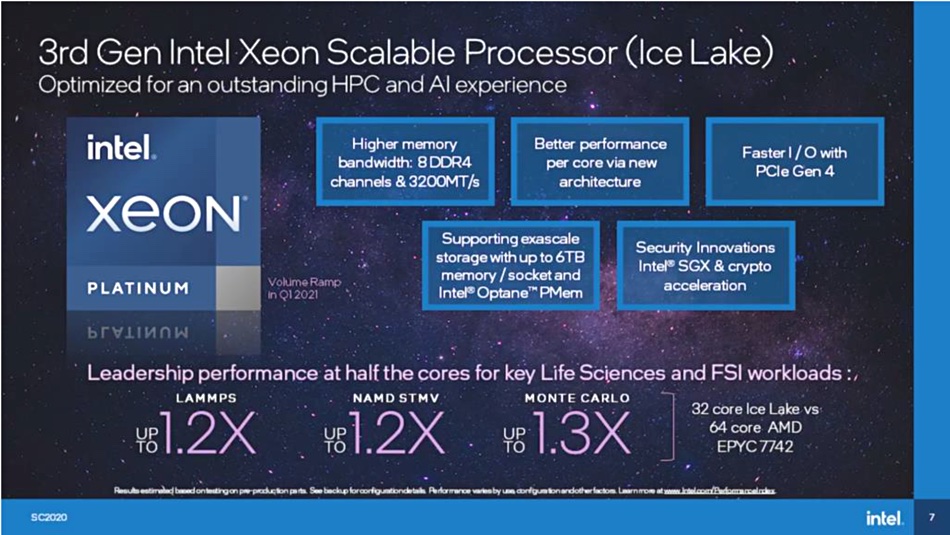Intel’s Ice Lake servers will unblock storage performance by reading data faster and loading it into a larger memory space. Storage writes are quicker too – that’s because Ice Lake supports PCIe 4.0, more memory channels and Optane 200 series persistent memory.
Ice Lake is Intel’s code name for the 10th generation Xeon processors which were introduced for laptops in August 2019. The server version, Ice Lake SP, is due in early 2021.
The company teased out some performance details last week to coincide with SC20. In her presentation for the supercomputing event, Trish Damkroger, GM of Intel’s High Performance Computing Group, proclaimed: “The convergence of HPC and AI is a critical inflection point. The Xeon SP is optimised for this convergence.”
We’ll discuss that another time. Let’s dive into the numbers.
In general, Ice Lake should provide up to 38 per cent faster SPEC floating point rate benchmark performance, at identical core count and frequency as a Cascade Lake Xeon. The greater memory capacity of Xeon SP Ice Lake servers translates into fewer IOs slowing down the processor, hence significantly faster app processing speed and storage IO overall.
PCIe Gen 4 is twice as fast as the current PCIe Gen 3’s 32GB/sec maximum. The standard supports up to 16 lanes and 16Gbit/s data link speed to deliver 64GB/sec. This means stored data can be loaded into memory faster – and that memory can be larger with Ice Lake.
Ice Lake SP increases memory capacity with two more memory channels per socket, with eight x DDR4 channels. Xeon Scalable Performance (Skylake) series processors have two built-in memory controllers that each control up to three channels. That equals six memory channels per CPU [socket]. Up to two DIMMs are possible per channel, totting up at 12 DIMMs per CPU. So, a Xeon SP M-class CPU has a maximum of 1.5TB of memory, or 0.25TB per channel. Ice Lake increases the memory channel count to eight, handling 2TB of DRAM.

Memory performance is faster at 3,200 MT/s, up from 2,933 MT/s. And bandwidth is increased to 190.7 GiB/s, up from 143.1 GiB/s.
In conjunction with Optane persistent memory, Xeon Cascade Lake has 4.5TB overall memory capacity. Ice Lake increases this to 6TB, using gen 2 Optane with sequential read bandwidth of 8.10GB/sec and 3.15GB/sec for write bandwidth. The first generation Optane PMem series runs up to 6.8GB/sec read and c2.3GB/sec writes.
Ice Lake and Sunny Cove
Intel is to introduce Sunny Cove, a new core microarchitecture, for Ice Lake. This is designed for Intel’s 10nm+ technology and provides about 18 per cent more instructions per clock (IPC) than its predecessor in the Xeon Skylake chips. Things that make Sunny Cove chips faster include a 1.5x large level 1 cache, 2x larger Level 2 cache and elements such as higher load-store bandwidth and lower effective access latencies.
Our sister publication The Next Platform dives deep into Sunny Cove in this article: “The Ticking And Ticking of Intel’s “Ice Lake” Xeon SP”.








